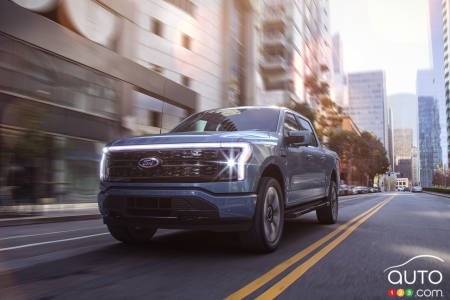When a company dominates a market, as Tesla has done for years in the electric-vehicle segment, it eventually becomes the target of competitors. At first, this takes the form of a healthy rivalry, but it often ends up as a ganging up on the leader.
That's what's happening with Tesla, whose market share in the electric vehicle world is currently at about 70 percent. Yet, according to Bank of America Merrill Lynch's annual Car Wars study (as reported by InsideEVs), that could drop to 11 percent by 2025 due to pressure, particularly from GM and Ford.
And let's not forget Volkswagen, the stated goal of which is to take over top spot from Tesla in the global electric car market.
According to the study, Ford and GM will each have a 15 percent share of the electric vehicle market in 2025. That represents a 10-percent increase for each firm over their current positions. The 20-percent gain shared by the two auto giants will, one can only assume, come mainly at Tesla’s expense.
Browse cars for sale available near you

At the heart of the market share growth will be models like Ford’s F-150 Lightning pickup truck and Chevrolet’s Silverado EV, but also all the other electric models that the two companies have launched or will soon introduce. John Murphy of Bank of America Merrill Lynch doesn’t mince words:
“That dominance Tesla's had in the EV market, particularly in the U.S., is done. It's going to shift wildly in the opposite direction in the next four years.”
- John Murphy, senior auto analyst at Bank of America Merrill Lynch
The bluntness comes in part from the fact he feels Tesla will lose its dominance because it is not expanding its portfolio fast enough to keep up with traditional automakers, but also new companies developing their electric product lines, for example Rivian and Lucid Motors. In his view, Tesla boss Elon Musk and his company benefited from a vacuum over the past decade, when there was little to no competition.

That vacuum is now being filled, and that will only speed up in the next few years. Like them or not, Tesla moved aggressively and innovated in the domain while potential competitors were asleep at the switch, but the irony is that its very dominance and success will have played a part in big rivals eventually adjusting and getting aggressive.
In another bit of irony, Tesla is now suffering from delays that will surely hurt it. The company has delayed its Cybertruck several times, and plans for the next generation Roadster have also been pushed back. If all goes well, there’s talk of production starting on that model next year.
According to John Murphy, Musk “didn't move fast enough. He had tremendous hubris that [other automakers] would never catch him and would never be able to do what he's doing, and they're doing it.”
Ford has already announced that it will be able to build two million electric vehicles worldwide by 2026. GM believes it will be able to do the same in North America and China as early as 2025.
The current situation remains subject to a bunch of unpredictable variables and the study’S projections could still end up being way off, but the indications are mounting that we're headed for a changing of the guard in the EV sector.



